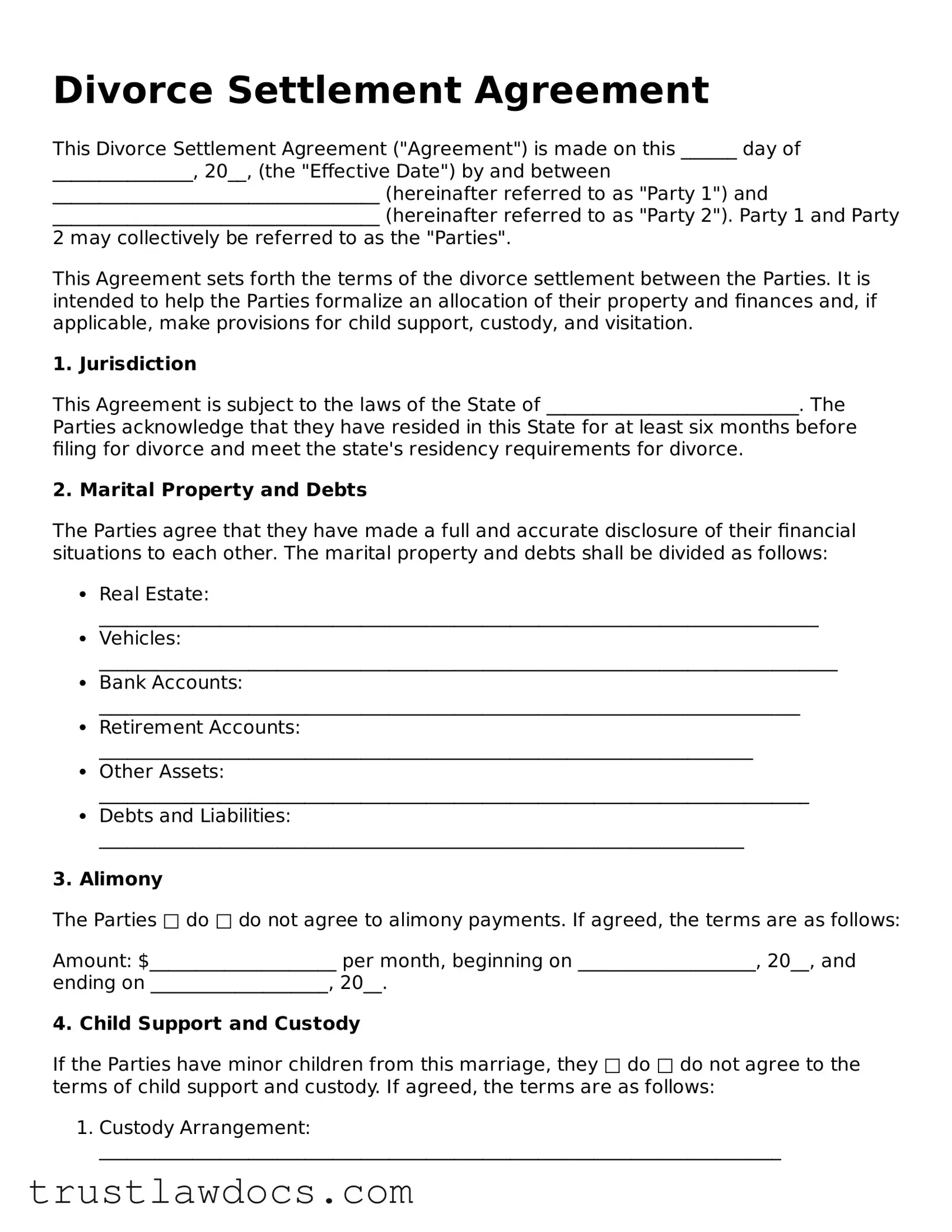Divorce Settlement Agreement
This Divorce Settlement Agreement ("Agreement") is made on this ______ day of _______________, 20__, (the "Effective Date") by and between ___________________________________ (hereinafter referred to as "Party 1") and ___________________________________ (hereinafter referred to as "Party 2"). Party 1 and Party 2 may collectively be referred to as the "Parties".
This Agreement sets forth the terms of the divorce settlement between the Parties. It is intended to help the Parties formalize an allocation of their property and finances and, if applicable, make provisions for child support, custody, and visitation.
1. Jurisdiction
This Agreement is subject to the laws of the State of ___________________________. The Parties acknowledge that they have resided in this State for at least six months before filing for divorce and meet the state's residency requirements for divorce.
2. Marital Property and Debts
The Parties agree that they have made a full and accurate disclosure of their financial situations to each other. The marital property and debts shall be divided as follows:
- Real Estate: _____________________________________________________________________________
- Vehicles: _______________________________________________________________________________
- Bank Accounts: ___________________________________________________________________________
- Retirement Accounts: ______________________________________________________________________
- Other Assets: ____________________________________________________________________________
- Debts and Liabilities: _____________________________________________________________________
3. Alimony
The Parties □ do □ do not agree to alimony payments. If agreed, the terms are as follows:
Amount: $____________________ per month, beginning on ___________________, 20__, and ending on ___________________, 20__.
4. Child Support and Custody
If the Parties have minor children from this marriage, they □ do □ do not agree to the terms of child support and custody. If agreed, the terms are as follows:
- Custody Arrangement: _________________________________________________________________________
- Child Support Details: ________________________________________________________________________
- Visitation Schedule: __________________________________________________________________________
- Other Provisions: _____________________________________________________________________________
5. Dispute Resolution
Any disputes arising from this Agreement shall first be attempted to be resolved through mutual negotiation. If the dispute cannot be resolved, the Parties agree to mediation before resorting to litigation.
6. Entire Agreement
This Agreement constitutes the full agreement between the Parties. Any prior understanding, representation, or agreement between the Parties regarding the content of this Agreement is superseded by this document.
7. Modification of Agreement
No modification of this Agreement shall be considered valid unless made in writing and signed by both Parties.
8. Governing Law
This Agreement shall be governed by the laws of the State of ___________________________.
9. Signatures
The Parties have executed this Agreement on the Effective Date above:
Party 1 Signature: ___________________________________ Date: _______________
Party 2 Signature: ___________________________________ Date: _______________
Witness Signature (if required by state law): ___________________________________ Date: _______________
